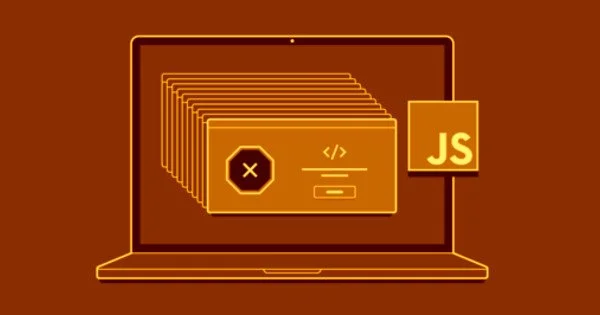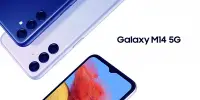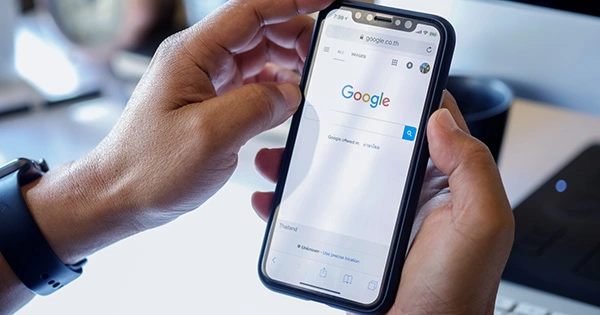Artificial intelligence’s emergence necessitates a paradigm shift in our society. In the future, AI may perform tasks that were previously completed by people in a number of fields. We soon face changes and challenges that we must surmount in ways that were previously unimaginable. To coexist in the same world as artificial intelligence, we will need to rethink how we generate employment and our social models.
Like many other sectors, the field of web design has been impacted by this change. In fact, a number of recent technological advancements have applied AI to web creation and design.
Artificial intelligence is now being used by many companies to create products that help online project developers and designers. Professionals’ jobs are made simpler by these new technologies, which also speed up some of the processes involved in creating digital goods.
Even though some of these tools are still in the experimental stage and require improvement, it has already been demonstrated how artificial intelligence and its machine learning models may motivate a fresh approach to design and front-end development.

Colormind: One of the most tedious, repetitive, but increasingly crucial tasks in the web design process is creating harmonious color palettes. Colormind is an AI-powered application that does this.
Since Colormind has been around for some time, the community has thoroughly reviewed and approved it. It learns color preferences from frequently viewed films, television shows, and works of famous art. It now has a sizable collection of color schemes that other people have made.
Khromav
By choosing 50 of your preferred colors, you can teach the artificial intelligence-based color tool Khroma. The computer generates an infinite number of color palette combinations based on these choices. They might be displayed in styles like Text, Poster, Gradient, and Picture that deal with typical use-case scenarios. Customers can experiment with color schemes on their source photos.
AI Vance: Thanks to AI image processing and automated photo editing technologies, it is now much simpler for web designers and anyone else who needs photos that have been polished or changed. Vance AI is one of the most well-known businesses in this industry.
Deep Convolutional Neural Networks, used by Vance AI, are trained on millions of photos and are exceptional at managing genuine details. Utilize the platform to simplify procedures and open up fresh possibilities for creative image alterations and manipulations that satisfy brand specifications and client expectations.
Continual Spread: A newly released AI-based technology called Steady Diffusion was created by Stability AI, CompVis LMU, Runway, EleutherAI, and LAION. It claims to produce some incredible results.
Now, it generates intricate graphics based on a text prompt describing the things to be included or excluded from the result. The model can also update outdated graphics to include freshly defined components.
Additionally, Stable Diffusion may generate picture-to-image translations or new images based on the original image, incorporating the text cue information. It’s wonderful that it’s gratis. Nevertheless, remember to use copyright-compliant materials.
Dall-E: When talking about deep learning models that generate digital images from text descriptions, we could not help but bring up Dall-E. Although there are some legal issues with this potent AI technology because it is still unclear who is the rightful owner of the images, it has already revolutionized how we take some kinds of photos.
What’s the big issue, then? An AI system called Dall-E produces graphics in reaction to commands. Greater resolutions might result in realistic images that imitate the intended aesthetics, concepts, and particular characteristics.
This is fantastic news because Dall-E cannot create pornographic, violent, or hateful images. Additionally, it uses cutting-edge techniques to prevent the creation of realistic facial images of real individuals. So, celebrities are safe. It can be used safely by web designers to modify vector assets for their site design concepts.
Midjourney: Midjourney has become more well-known recently. If you are a creator, you have probably heard about it once or twice. The platform is still being tested, but the initial results are promising (it is currently available in open trials and welcomes feedback for improvements).
Midjourney is a robot that communicates with users in their native tongue. Site designers may offer instructions and orders to construct graphics, including online interfaces, based on verbal descriptions and prompts. It is effective at generating concepts and original content suitable for supposedly “custom advertisements created for people.”
ChatGPT Prompts – Curated Collection: The way that web design tasks are finished has been completely altered by ChatGPT. It assesses a remark made during a conversation using algorithms and generates a result appropriate for the input. Only clear instructions will work.
Although there is still much room for improvement, it has already yielded some outstanding results. Results from ChatGPT, when asked to play the parts of a project manager, copywriter, UI/UX designer, or web designer, are just a few instances. As proof, they have collected a list of genuine ChatGPT prompts for website designers and outputs that deal with a few common issues.
Designs AI: Designs AI is a potent AI-based all-in-one solution for non-designers and web designers who need to rapidly create stunning templates. There are many significant methods the brand can be communicated, including voice, video, design, and logo. Additionally, there are typeface pairs, a graphic maker, and a color matcher.
It is a complete system with generators that complies with the most current standards and requirements. Even though it requires your assistance to make a mockup, it still has many excellent AI features that greatly accelerate the web design process.
Zyro: Lorem Ipsum’s time has come to an end. If you need a text excerpt for your website, AI-powered tools that produce human-like readable versions might be helpful. Zyro is also one of them. Despite the fact that this incredible internet tool has spared millions of website creators the time-consuming task of creating fake text, the niche is still expanding.
Our AI-powered content generator produces unique and tailored text, including blog headlines, in a matter of seconds based on your criteria. Due to its extensive training with countless tools, it adheres to the best SEO and copywriting practices.
Playground by TeleportHQ: AI is used by the open-source TeleportHQ technology to deliver “real-time design-to-code” solutions. In 2018, TeleportHQ first unveiled the video (above) showing the real-time transformation of a wireframe drawn on a blackboard into front-end code. The result was impressive!
The detection of hand-drawn UI elements is introduced to computer vision. The process was made possible by a machine learning model developed with TensorFlow (open source platform for machine learning developed by the Google Brain team). At that moment, Romanian startup TeleportHQ kept researching artificial intelligence in web design.
Zecoda: With the help of artificial intelligence, Zecoda is a tool that allows you to quickly and effectively convert your Sketch files into front-end code. When you send Zecoda your design file, it will rapidly produce the HTML, CSS, and JavaScript code using the Vue.js framework. You can use Zecoda to transform your design into a responsive website that is ready for publishing without writing any code.
Zecoda is a machine that is 90% artificially clever and 10% human-touched. This is done in order to blend the speed of deep learning with the security and quality assurance offered by a web developer evaluation. Actually, the Code that is provided to you is always reviewed by a coder.
Artyline: You can easily turn your hand-drawn designs into interactive, high-fidelity prototypes using the augmented reality (AR) smartphone software Artyline. Think about presenting your paper-drawn version as an augmented reality experience during a briefing. This is possible thanks to artyline.
Additionally, this iOS software enables you to build creative screens with modern UI and design options, real-time usability testing with eye-tracking and click-tracking statistics, and.
The software is simple to use: simply create your image and scan it using the app to create an augmented reality version of it in a matter of seconds. Artyline is enhanced by artificial intelligence and uses computer vision to recognize drawing components and augmented reality on your smartphone to produce a ready-made mockup.















